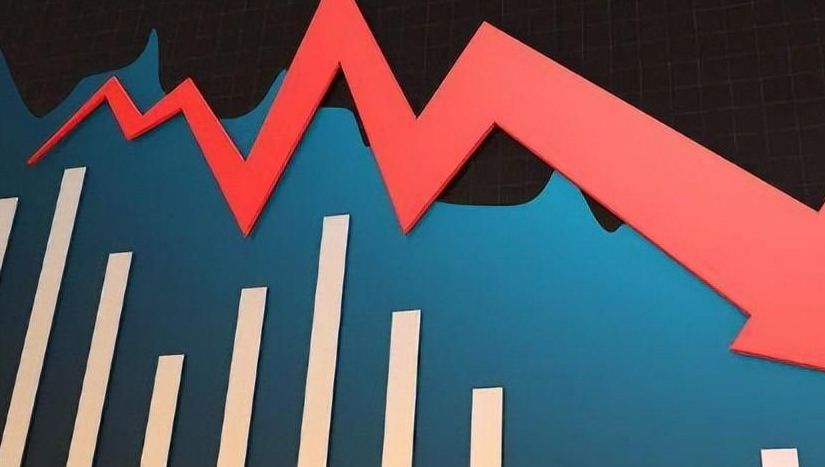Divergence in US Stocks: Dow Surges Over 300 Points
Advertisements
The stock market opened the week with mixed results, highlighting the ongoing volatility driven by various economic indicators and geopolitical developments. The Dow Jones Industrial Average rose by 358.67 points, a substantial 0.86% increase, closing at 42,297.12. In contrast, the tech-heavy Nasdaq fell by 0.38%, settling at 19,088.10, while the S&P 500 managed to rise slightly by 0.16%, closing at 5,836.22. This divergence in performance is primarily attributed to a combination of strong employment data that pushed government bond yields higher and nervousness surrounding ongoing developments in the technology sector.
The employment report released last week showed better-than-expected results, which raised concerns about persistent inflation and the Federal Reserve's subsequent policy decisions. Treasury bond yields continued to rise, with the 10-year yield inching closer to the critical 5% mark. The two-year Treasury yields also climbed, reaching 4.40%, indicating market sentiment that may remain hawkish in the short term. Such yield movements are closely monitored, as they can serve as a barometer for anticipated interest rate changes.
Moreover, investors are grappling with a moderate yet steady uptick in inflation expectations. According to a consumer survey from the New York Federal Reserve, one-year inflation expectations were stable at 3.0%, while three-year projections increased from 2.6% to 3.0%. The rising costs of everyday items, particularly food and housing, heighten concerns among consumers about overall price stability. In stark contrast, prices for other essential categories, notably gasoline, saw expected declines, the lowest since September 2022. This mixed signal reflects the complex dynamics currently shaping the U.S. economic landscape.
Against this backdrop, ongoing fears around forthcoming economic policies from the incoming presidential administration add another layer of uncertainty. Proposed tariffs and measures to curb illegal immigration could further strain global trade relations, potentially exacerbating inflationary pressures. Investors are keenly awaiting key economic reports, including the Consumer Price Index (CPI) and the Federal Reserve's Beige Book, which will be released midweek. These reports are poised to provide critical insights into current economic conditions and monetary policy outlook.

Tim Ghriskey, a senior portfolio strategist at Ingalls & Snyder, articulated the prevailing sentiment among investors: "The market remains wary of higher inflation data. Given this backdrop, the Federal Reserve is unlikely to implement significant cuts to interest rates in the near term." This suggests that the bearish sentiment could linger, hampering market recovery as fixed income yields rise, inversely impacting both the bond and equity markets. Higher yields typically detract from equity attractiveness by elevating corporate financing costs and redefining the investment landscape in favor of fixed-income assets.
Meanwhile, LPL Financial's Chief Technical Strategist, Adam Turnquist, emphasized the precarious situation for the stock market if the 10-year Treasury yield hits 5%. He remarked, "Until we see stabilization above these levels, it's tough for the market to gather any meaningful traction." While he does not predict a bear market imminently, Turnquist foresees potential short-term pullbacks as the market digests complex economic signals.
As the earnings season begins, investors are hopeful that upcoming reports from major financial institutions like Citigroup, Goldman Sachs, and JPMorgan Chase—set to be released on Wednesday, followed by reports from Morgan Stanley and Bank of America—will instill some stability in the market. This period is often critical for assessing the financial health and expectations of corporate America amidst such fluctuating economic conditions.
In sector performance, the technology sector, particularly semiconductor stocks, faced notable declines. Nvidia plummeted by 1.97%, and Micron Technology fell 4.31% following announcements of new export restrictions on AI chips and technology from the U.S. government. These regulatory measures have introduced further uncertainty into the tech industry, leading to recalibrations in investor sentiment regarding profit forecasts.
Conversely, the healthcare sector demonstrated resilience, led by CVS Health and Humana, both increasing approximately 7%, with UnitedHealth gaining nearly 4%. The government’s proposal to adjust reimbursement rates for Medicare plans in 2026 likely fueled optimism in this sector. Johnson & Johnson also saw a rise of 1.7% as it announced an acquisition aimed at bolstering its neuroscience investments, reflecting a proactive strategy to expand its portfolio amidst market volatility.
The utilities sector, however, experienced considerable downturns, notably with Edison International suffering a near 12% loss after reports implicated its equipment in starting wildfires in California. Such regulatory and legal scrutiny can have detrimental effects on operational capacities, prompting investors to reassess the sector’s risk-reward profile.
In a dramatic turn, Moderna shares fell by 16.8% after the company announced a substantial reduction in its 2025 sales forecast, an adjustment reflecting broader concerns over vaccine demand post-pandemic. This outlook shift reverberates through the biotechnology and pharmaceutical sectors, causing investors to reassess their positions.
On the international front, the Nasdaq Golden Dragon China Index fell nearly 0.3%, amid shifting geopolitical tensions and firmness in U.S. – China trade relations. Furthermore, oil markets showed resilience amidst emerging sanctions against Russia, with WTI crude futures gaining 2.94% to close at $78.82 per barrel and Brent crude rising 1.57% to $81.01 per barrel.
The precious metals sector faced significant setbacks, particularly for gold, which experienced a notable decline exceeding 1%, falling below the critical threshold of $2,700 per ounce. This downward trajectory is largely attributed to a stronger dollar and a potential easing of tensions in the Middle East, which typically bolster safe-haven asset demand.